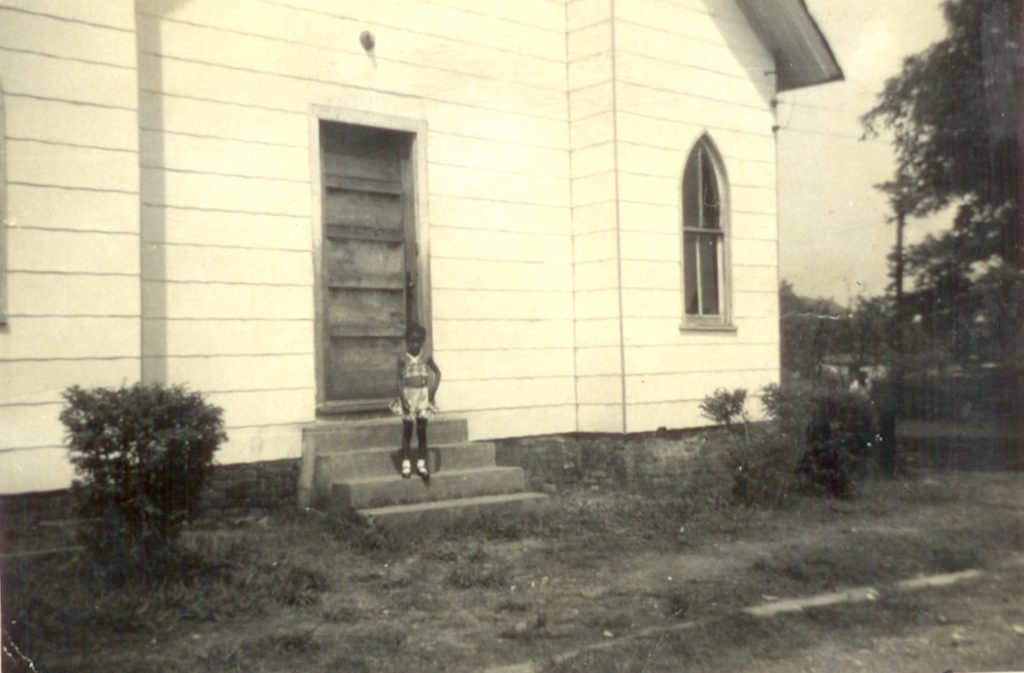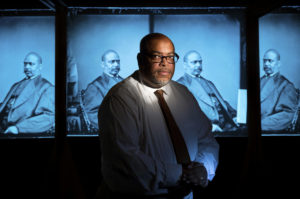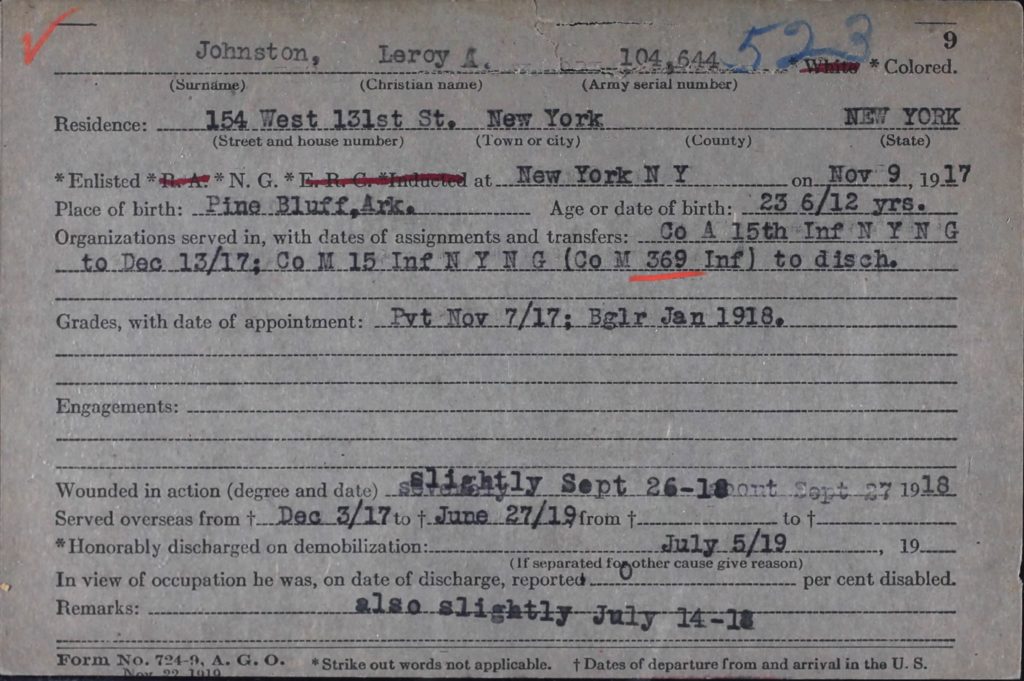Dr. Brian Mitchell and students uncover forgotten African American History in Arkansas
In September 1919, a dark chapter in Arkansas history emerged in a small Delta town next to the Mississippi River. Elaine, Arkansas, sits just west of the river in Phillips County. During this time, black sharecroppers gathered with the Progressive Farmers and Household Union to unite against the landowners and store clerks who manipulated their sales to keep them in perpetual debt.
According to the Encyclopedia of Arkansas History and Culture, landowners would take cotton picked by sharecroppers to the store and lie about the amount of money paid for each batch. Store clerks would manipulate their ledgers to verify the story of the landowners. The sharecroppers knew they were being deceived, and wanted to band together with a union and hire a lawyer to help their cause. Among the men was World War I veteran Leroy Johnston and his three brothers. However, landowners caught wind of their plan and hired spies to attend their meetings and report their conversations back to them. One September night, two spies were shot when the union members discovered their identity. One spy was seriously injured and one died. After the incident, a telephone operator in the town reached out to different communities for reinforcements.
As more and more citizens responded to her call, a white mob suddenly formed and began killing hundreds of black men, women, and children. The call even reached the governor’s office, where Arkansas governor Charles Brough ordered 500 soldiers from Camp Pike to disperse the mob. After the massacre, twelve black men involved in the meeting that night were sentenced to death by an all-white jury for the murder of the one spy. No one from the white mobs were tried for murder during the massacre. After a series of appeals, which eventually led to the U.S. Supreme Court under the case Moore vs. Dempsey, the twelve men were released from prison.
Dr. Brian Mitchell from the history department is leading the effort to uncover this grim chapter in Arkansas history and other forgotten moments in African American Arkansas history. A native of New Orleans, Mitchell began teaching at UA Little Rock in 2014. He’s passionate about including students and the community in his research.
“I’m really big on student involvement in my research, where a lot of traditional historians write books and articles, and those tend to be very singular events that they do as scholars,” Mitchell said. “History is very often looked at as a very lonesome profession. Since I do mostly public history, I get to involve community and my students in the research, which makes it really exciting for them and really exciting for me.” Mitchell started unearthing the history of this massacre when he and his students began searching for the location of the bodies of those killed in the riots.With hundreds of people killed, it’s unusual that no one knows where the bodies are buried. He turned to the Arkansas State Archives and found a collection from a local funeral home that included death certificates in Phillips County. Once he found these records, he and his students began indexing and scanning each certificate to make them accessible to the general public.
“I’m really big on student involvement in my research, where a lot of traditional historians write books and articles, and those tend to be very singular events that they do as scholars”
Honoring Veterans
From this project, he was able to start investigating the life of World War I veteran Leroy Johnston, who was killed in the riots along with his three brothers. As they dug further through Johnston’s military records, they discovered his information had been altered to show that he was “slightly” injured during combat in France instead of “severely.” Because of this alteration, he was not able to receive military benefits and honors for serving his country. Once Mitchell and his students compiled enough information to make a case about the forgery, he contacted Arkansas Congressman French Hill to see if Leroy Johnston could posthumously receive the honors he was due. Congressman Hill agreed, and in a ceremony in Washington, D.C., Johnston received the medals he deserved during his time in combat, including the Purple Heart. Johnston was part of the distinguished infantry regiment, “Harlem Hellfighters.”
After this ceremony, Representative Hill, along with Representatives Emanuel Cleaver and Sam Graves introduced the World War I Valor Medals Review Act (HR 2249). This bill requires the Department of Defense to review military records of minority servicemen. “It’s interesting when you think that one little project in Little Rock opened the pathway for the reexamination of all the records of black soldiers in the United States,” Mitchell said. Mitchell’s next project examined what happened to the twelve men released from prison. With the threat of lynching and other forms of racial violence, these men naturally wanted to leave the community. Mitchell and his students found six of the twelve men and created ways to commemorate their lives at their grave sites. Additionally, Mitchell and his students wrote biographies for each of the men and published them in the Encyclopedia of Arkansas History and Culture. They also created a fundraising campaign to establish historical markers at each grave site, which should be erected in fall 2019. The first marker placed will be for Frank Moore at the National Cemetery in Washington, D.C. Mitchell sees this project as an important reminder of what can happen when hate and extreme polarization lead to violence.
“[Frank Moore was] a man who fought for his country, returns, and is placed on death row falsely, when all he’s trying to do is protect his rights as an American citizen,” Mitchell said.
“It’s interesting when you think that one little project in Little Rock opened the pathway for the reexamination of all the records of black soldiers in the United States”
Commemorating the Past
In September 2019, different groups in Little Rock, Helena-West Helena, and Fayetteville held events to commemorate the 100th anniversary of the tragic event. These events ranged from a syposium, video presentation, talks, church service, and musical performances. The Elaine Massacre Memorial was officially dedicated in Helena-West Helena on Sept. 30, 2019.
Westrock Community
Once Mitchell and his students finish their research related to the Elaine Massacre, they will begin looking in-depth into the former Westrock community, located in the present-day Riverdale area off Cantrell Road in Little Rock. This community housed servants and other employees who worked in the Heights area of Little Rock in the early 20th century and before. In the 1960s, this community was relocated to the far-east side of town in the Granite Mountain area of Little Rock. Mitchell wants to work with all areas of the community to create an interactive website that tells the story of the Westrock community and the families that inhabited the area.
“We want this to be a community effort, and an effort that’s as much about telling the history and healing, and reuniting people,” Mitchell said.

Girl standing in front of Pilgrim Rest Missionary Baptist Church #3, one of the cornerstones of the Westrock community. Credit: Lois Threet
Spreading the Message
Mitchell is still hard at work to uncover the hidden past. In June 2019, Dr. Mitchell and Dr. John Kirk, director of the Anderson Institute of Race and Ethnicity at UA Little Rock, contributed to a CNN Podcast that shed light on a tragic fire at the Negro Boys Industrial School in Wrightsville, Arkansas, that killed 21 children.
Mitchell sees himself as a historian compelled to tell the hard stories. While Arkansas is known for civil rights events such as the Little Rock Nine, many stories are generally unknown to the public, in many ways because they don’t have happy endings. But the harsh reality of these endings enable us to look at our present circumstances in a new light. Historical research peers into the human heart and examines how just and unjust policies affect our communities and families.
Acknowledging the sins of the past also allows us to heal and move forward. It examines what we need to do in order to prevent these events from happening again. In order to create a just and peaceful society today, we must examine how hatred and discrimination affected societies of the past. Historical research gives us the perspective we need to create an ethical society that treats all members with respect and dignity.

